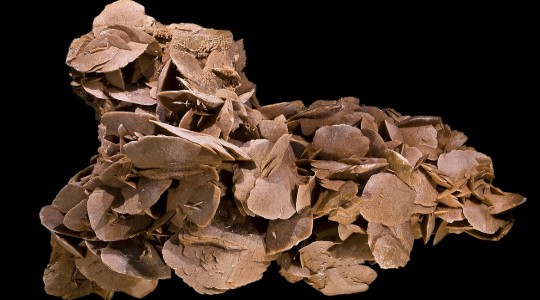Gypsum, one of the most widespread and versatile minerals on Earth, forms in stunning variety – from transparent selenite crystals to sculptural alabaster and satin spar. Found in deserts, caves, and ancient seabed deposits, gypsum reveals the beauty of evaporite geology at its finest.
This article explores twenty of the world’s best and most famous gypsum localities, celebrated for their remarkable crystal formations, scientific importance, and natural artistry.
1. Naica Mine, Naica, Chihuahua, Mexico – Home to the legendary ‘Cave of Crystals’, where underground selenite crystals reached over 10 metres long – the largest ever found on Earth. Exceptional form and sheer scale make this site world-famous.
2. Maravillas Mine, Cave of Swords, Naica, Chihuahua, Mexico – The same system as Cave of the Crystals, but with smaller, more accessible selenite crystals; one of the earliest gypsum discoveries in Naica.
3. Níjar, Almería & Tijola, Andalusia, Spain – Known for small, transparent, needle-like and also fibrous gypsum crystals; a classic European selenite source.
4. Sicily, Italy – Numerous ancient mining locations across the island. These widespread evaporite deposits produce fine satin spar and pure white alabaster varieties, long used in sculpture and ornamentation.
5. Montmartre, Paris, Ile-de-France, France – Historic quarries extensively mined for alabaster and fine-grained gypsum, subsequently turned into ‘Plaster of Paris’. Economically and historically important.
6. Great Salt Plains, Alfalfa County, Oklahoma, USA – Famed for colourless selenite crystals with ‘hourglass’ inclusions, where sand grains are trapped within transparent gypsum – a true mineralogical curiosity. Additionally, the area boasts numerous examples of well-formed gypsum, characterised by an attractive pale-brown sand coating.
7. Lake Lucero, White Sands National Park, New Mexico, USA – The vast gypsum dunes here are unique in the world; pure white crystals ground to sand by wind erosion. Occasional finds of twinned gypsum crystals in an unusual form called ‘fishtail’ gypsum.
8. Rica Mine, Pulpi, Spain – A crushed stone quarry better known for celestine and baryte with spectacular water-clear aggregates of parallel gypsum crystals.
9. Windsor, Nova Scotia, Canada – One of the oldest commercial gypsum mines in North America; has produced fine white massive gypsum and alabaster since at least 1900.
10. Mount Sodom, Dead Sea, Israel – The area produces large irregular gypsum crystals in association with halite; a striking desert occurrence.
11. Terlingua Mining District, Texas, USA – Fibrous satin spar forms in desert soils, creating distinctive orange and brown clusters. Also, well-known for outstanding ‘ram’s horn’ type formations, often on shale matrix.
12. Santa Eulalia District, Chihuahua, Mexico – Distinct from Naica specimens, the area is known for numerous evaporite deposits yielding fine, transparent selenite crystals on matrix.
13. Red River Valley, Winnipeg, Manitoba, Canada – Produces attractive, transparent, large crystals and fibrous forms. Notable for very strong blue-green fluorescence under UV light.
14. Kirkby Thore, Eden, Cumbria, England – Highly unusual spherical clusters of radiating brown selenite crystals on matrix of massive gypsum. These ‘Daisy Wheel’ specimens are highly collectible.
15. Isle of Sheppey, Swale, Kent, England – Large, often doubly-terminated, crystals of transparent gypsum accompanied by crystal outgrowths of smaller crystals around the middle.
16. Mendoza Province, Argentina – Gypsum occurs in large evaporitic basins; selenite crystals of impressive size and clarity are found in salt flats.
17. Piła County, Greater Poland Voivodeship, Poland – Large, transparent, blocky crystals of gypsum, often intergrown with others to produce intricate shapes and forms.
18. Salinas de Otuma & Humay Districts, Pisco Province, Peru – Spectacular large, transparent, bright orange, white and pastel-green selenite crystals, sometimes with fluid inclusions found in these arid coastal deposits.
19. Lubin Mine, Lubin, Lower Silesian Voivodeship, Poland – Known for lustrous, translucent, pretty mint-green gypsum blades with hollow terminations. Also, for fragile sandwich-like clusters consisting of crusts of massive gypsum separated by columnar crystals crossing in between.
20. Alabaster Quarries, Ebro Region, Aragon, Spain – Ancient alabaster quarries centred on Monte Patillas noted for selenite crystals forming within clay beds, commonly as dense layers of the variety ‘satin spar’; geologically and historically significant and aesthetically pleasing.
The Assay House—Mineral Dealers of quality Mineral Specimens
Image Credits - CC Didier Descouens

